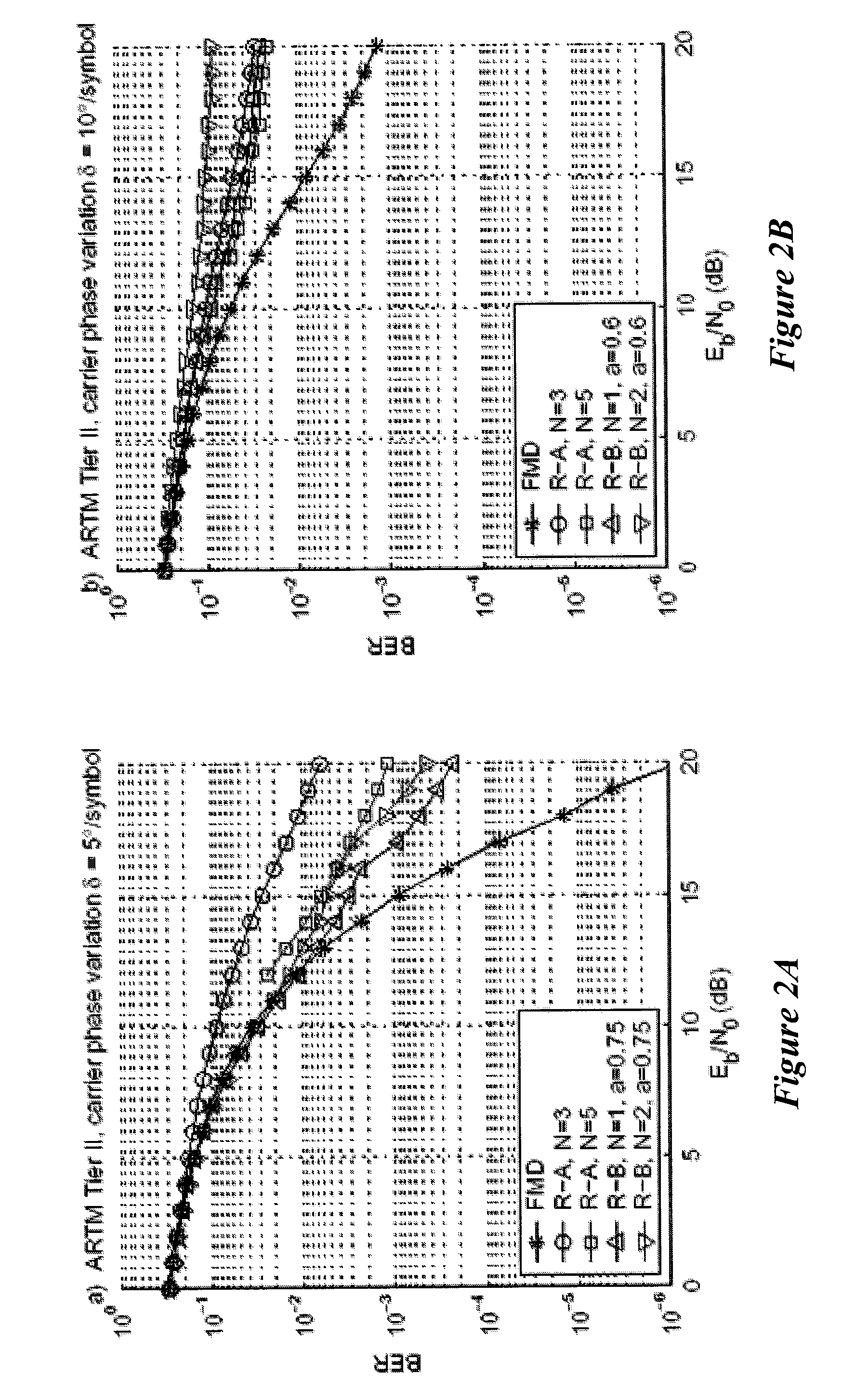Multi-symbol noncoherent CPM detector
- Summary
- Abstract
- Description
- Claims
- Application Information
AI Technical Summary
Benefits of technology
Problems solved by technology
Method used
Image
Examples
Embodiment Construction
[0026] The present invention is directed to a noncoherent receiver capable of allowing multi-symbol observation. In particular, the present invention is directed to a continuous phase modulation detector and method for continuous phase modulation detection.
[0027] Continuous phase modulation refers to a general class of digitally modulated signals in which the phase is constrained to be continuous. The complex-baseband signal is expressed as: s(t)=exp(jψ(t,α))(1)ψ(t,α)=2π∑i=-∞nαih(i)q(t-ⅈ T), nT<t<(n+1)T(2)
where T is the symbol duration, h(i) are the modulation indices, α={αi} are the information symbols in the M-ary alphabet {±1, ±3, . . .±(M−1)}, and q(t) is the phase pulse. The subscript notation on the modulation indices is defined as:
h(i)≡h(i mod Nh) (3)
where Nh is the number of modulation indices (for the special case of single-h continuous phase modulation, Nh=1). The phase pulse q(t) is related to the frequency pulse f(t) by the relationship: q(t)=∫...
PUM
 Login to View More
Login to View More Abstract
Description
Claims
Application Information
 Login to View More
Login to View More - R&D
- Intellectual Property
- Life Sciences
- Materials
- Tech Scout
- Unparalleled Data Quality
- Higher Quality Content
- 60% Fewer Hallucinations
Browse by: Latest US Patents, China's latest patents, Technical Efficacy Thesaurus, Application Domain, Technology Topic, Popular Technical Reports.
© 2025 PatSnap. All rights reserved.Legal|Privacy policy|Modern Slavery Act Transparency Statement|Sitemap|About US| Contact US: help@patsnap.com



